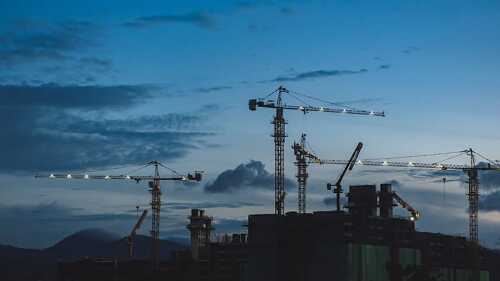Disruptive forces created by climate change represent the “new normal” for the real estate industry and cities worldwide, posing “huge risks” to those not adequately preparing for it, warned a panel of experts at the ULI Europe Annual Conference in Paris in early February.
“Whether you’re an owner, occupier, investor, insurer, or running a city, it affects you. Extreme weather is a topic that goes right across the board, although it is not on the radar of many people,” said Dame Judith Mayhew Jonas, former chairman, London & Partners.
Two billion people worldwide would be vulnerable to flood disaster by 2050, said Henk Ovink, principal at Rebuild by Design, and senior adviser to Secretary Shaun Donovan, U.S. Department of Housing and Urban Development/Hurricane Sandy Rebuilding Task Force.
Related: Extreme Weather Events and Property Values | Video: Rebuild by Design | Building for Resilience
“You all invest in places near water—it is an asset. But it isn’t an asset when it hits you hard. Being in a typhoon can kill and can be devastating. Climate change is slow—so slow that any decision political or investment is out of reach,” Ovink warned.
A report published by ULI last year found that the financial uncertainties caused by extreme weather were being “considerably underestimated by real estate investors.” But natural catastrophes are growing worldwide.
There were almost $400 billion of losses due to storms, floods, and drought or extreme temperatures in 2011, compared with just under $50 billion a decade earlier, according to the NatCatSERVICE. The database also reported 900 loss events due to extreme weather in 2014, mostly caused by storms.
“If you believe that success depends on long-term investment, then you need to think about these risks,” said Kate Brown, group sustainability director at Grosvenor and coauthor of the firm’s Resilient Cities Research Report. “Decisions based on GDP are inadequate in the context of extreme weather,” she said.
But Brown explained that capital values could be protected in the face of climate change, providing that investors assess a city’s resilience.
Presenting the findings of Grosvenor’s Resilient Cities Research Report, which defined resilience as the least vulnerable and most adaptive cities, Brown said that investment hot spot London ranked only 18th due to its increasing social tension and lack of affordable housing. Moscow, Milan, and Madrid ranked among the least resilient European cities.
The top three most resilient cities in the world, Grosvenor found, were Toronto, Vancouver, and Calgary, while Zurich, Amsterdam, and Frankfurt are among the most resilient cities in Europe.
“The disruption has started; the effects are being felt. Hugely sophisticated thinking is starting to emerge. We need to evaluate with new tools,” said Brown.
Ovink—referring to Rebuild by Design’s work to secure $920 million of disaster recovery funding for New Jersey and New York following Hurricane Sandy—said that evaluating risks and creating more resilient cities depends on collaborative, interdisciplinary action.
“Interdependency is our way out,” he said. “What does collaboration mean? It means inclusive leadership. Not insurers first, then bankers, then developers, and then politicians. No. It is having everyone in same room thinking about this problem. Knowledge of the IPCC [Intergovernmental Panel on Climate Change] has to be matched with projects on the ground,” said Ovink.
Hurricane Sandy helped to wake people up to the threat posed by extreme weather events, he added: “Hurricane Sandy was not the worst storm ever, but it raised questions. We talk about it because it hit New York City. It made climate change hit you in the face. When such a city is affected, you need to exploit that opportunity.”
Gregory Lowe, executive director of Willis Group, said that while finance is tied to the availability of insurance, future changes in exposure would affect the provision and pricing of it because tools were now available to evaluate future hazards.
“We can model on various IPCC scenarios with data analytics. What makes a building resilient? What about the infrastructure that surrounds a building? Transparent data should lead to better decisions,” he said.
At the 2014 United Nations Climate Summit, the insurance industry committed to double its green investments to $84 billion by the end of 2015 and announced its intention to increase the amount placed in climate‐smart development to ten times the current amount by 2020, Lowe told delegates.
“If you are developing a building today that will still be around in 60 years’ time when the exposure is very, very different, it is important to make the right decisions now, so you are not building things in the wrong places,” said Lowe, listing solar panels, natural ventilation, water storage, and shading technologies as features that would improve a building’s resilience.





